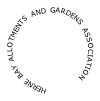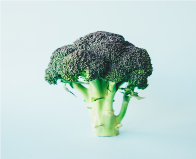







&



BROCCOLI
Broccoli grows best in the Early Spring and Late Autumn when the soil temperature is cool.
It is a distant cousin of the cabbage plant and is not difficult to grow in cool weather.
Unlike cabbages, broccoli is grown for its immature flower heads, which must be harvested before they become too mature and bolt (go to seed).
Planting
Broccoli is best grown in soil at day time temperatures in mid 60s F (20 C) but will tolerate a light frost. It grows best in a well-
Feeding
Broccoli grows very quickly and will require a lot of nutrients, such as rich compost or a balanced organic fertilizer, which will improve its growth.
Diseases and Pests
Fortunately broccoli is not prone to too many diseases. The most common of these are insect pests, aphids, slugs and cabbage white caterpillars.
Watering in dry weather
Broccoli grows best on evenly moist soil. It requires to be watered deeply to encourage it to grow deep roots.. DO NOT allow the soil to become too dry between watering.
Planting
The growing seasons are very short so try to stagger planting every few weeks. The best spacing is about 18 inches apart.
Seeds:
Spring planting should be started off indoors. Sow the seeds about 3/8 inch deep. When you plant out young plants it’s best to put them a little deeper in the ground than they were in the pots.
Harvesting
When the broccoli head has grown to several inches in diameter your broccoli should be ready to harvest. The heads should be green and firmly compacted.
If left unharvested then the heads will loosen and turn yellow as the flower opens. If this happens it is too late: you have lost the crop.
Harvest the heads, cutting with a sharp knife at an angle several inches below the head. Continue to care for the root as it could produce side shoots if you are lucky.
